The 4th Annual Middle East Variable Refrigerant Flow Conference moved away from issues plaguing the VRF industry that had dominated the last edition of the event, and cast a forward-looking gaze at opportunities for growth and how the technology can help the region achieve its environmental goals. We bring you the post-event report.
The 4th Annual Middle East Variable Refrigerant Flow Conference, produced by CPI Industry, publishers of Climate Control Middle East magazine, held on March 21 and 22 at Al Murooj Rotana, Dubai, opened to a packed audience comprising end-users, consultants and manufacturers. The high point of the conference was the unprecedented support and endorsement from a number of government and quasi-government bodies, such as the UAE Ministry of Climate Change & Environment, the UAE Ministry of Infrastructure Development, GCC Standardization Organization (GSO) and Gulf Organisation for Research & Development (GORD).
B Surendar, Editorial Director and Associate Publisher at CPI Industry, set the direction and tone of the conference in his introductory speech, when he said: “Even till the previous edition of this conference, the discussions on VRF systems were laced with cynicism and doubt. Since then, the industry has gone from strength to strength, and today, the general view is that VRF systems have reached quite a pinnacle in terms of development.”
He promised that the conference would be a departure from earlier editions, because the programme agenda had been designed to reflect the recent developments. “We are gathered here to discuss the opportunities for growth, and at how VRF systems can help the region achieve its environmental goals,” he said.
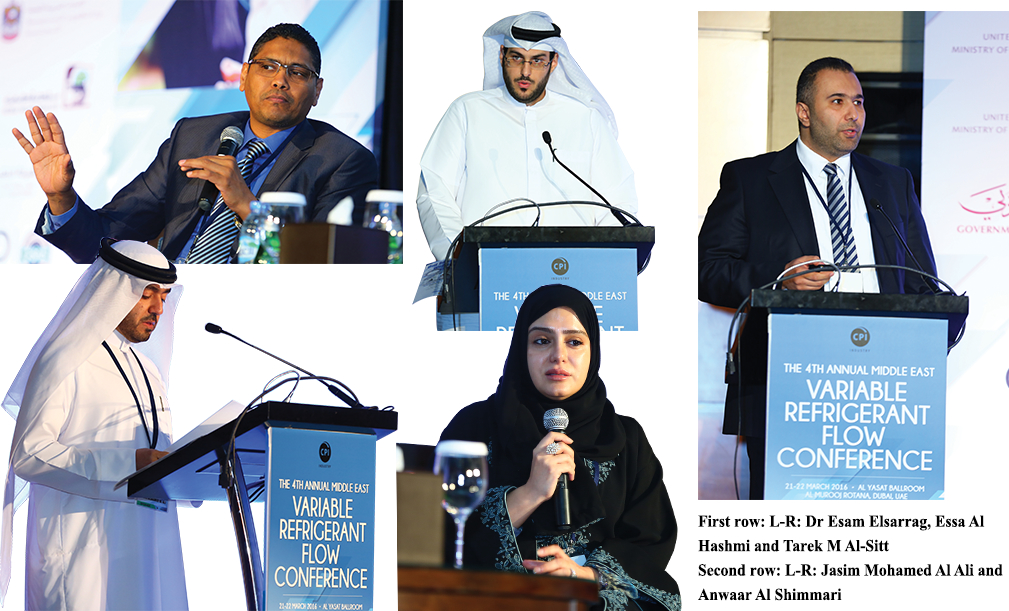
Surendar’s speech was followed by a keynote address by Essa Al Hashmi, Undersecretary Assistant of Environmental Affairs, UAE Ministry of Climate Change & Environment, who revealed the Dubai Pathway on HFCs. He reminded the audience that the global warming potential of HFCs was 15,000 times greater than that of CO2, and that emissions of HFCs have been increasing seven per cent per year. To counter this, he said, 197 parties had agreed at the COP 21 meeting to control the use of HFCs by working together to an HFC amendment this year. Applauding the VRF industry, he said: “The contribution of your industry is highly significant to realise the goals of the Paris Agreement and the Montreal Protocol. We look forward to working together for the best solution for a sustainable city.”
There are no opportunities for VRF systems in any of the World Cup stadiums in Qatar, but there are going to be 60 training pitches across the country
In the plenary address which followed, Anwaar Al Shimmari, Director of Design, UAE Ministry of Infrastructure Development; and Board Member, Sheikh Zayed Housing Programme, covering a wide arc, spoke about the rationale behind the UAE Ministry of Infrastructure Development, which focused on happiness, innovation, the UAE National Agenda (UAE Vision 2021), R&D, HVAC/ASHRAE policies and guidelines and social media and awareness, among other topics. “We cannot just assume that District Cooling or VRF is the optimum solution, unless we forget about the sight of financial impact as of ROI,” she said. She added, “Awareness is very important.”
The panel discussion that ensued was moderated by Jasim Mohamed Al Ali, Manager – Major Projects, Infrastructure Power & Water Planning – Distribution Planning, at the Dubai Electricity and Water Authority (DEWA). The topic under discussion was positioning mega-events, such as Dubai EXPO 2020 and FIFA World Cup 2022, in the context of building sustainable cities in the GCC region.
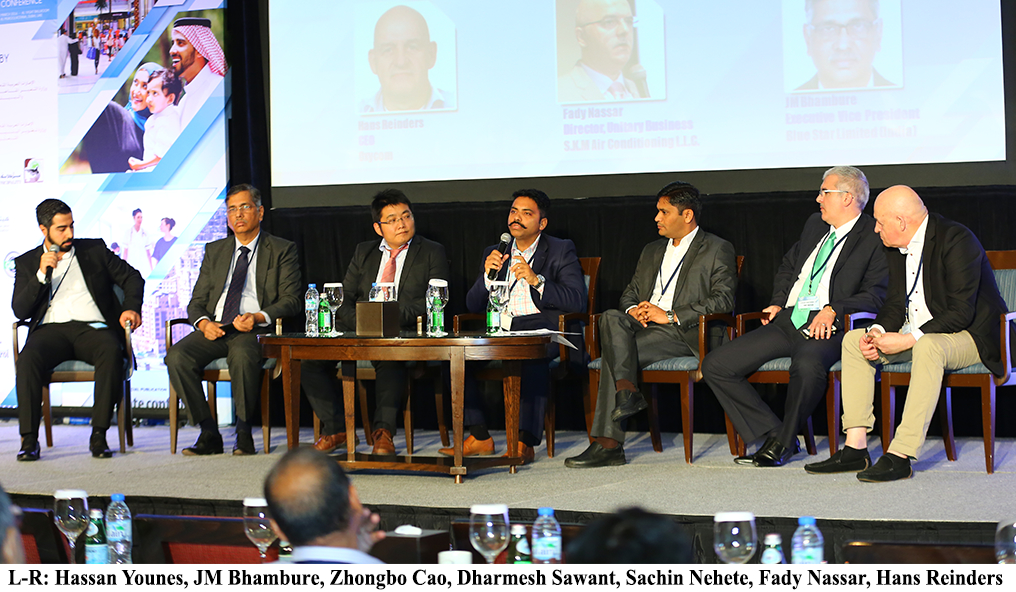
The participants, Al Shimmari, PR Jagannathan, Manager – Sustainability at TRAKHEES, and Dr Esam Elsarrag, Director of Research and Development, GORD, discussed the two events as milestones within the framework of long-term sustainable development vision and the roadmap of the region. They also exchanged their views on how to avoid possible pitfalls arising out of challenging delivery schedules that can compromise energy efficiency and broad resource conservation goals, along with the road ahead for VRFs and the opportunity the two events presented.
Al Shimmari spoke of how factors, such as cost of technology and proximity to maintenance services were deciding factors while choosing any HVAC technology. “People do not pay taxes, so there is no ROI for the government by providing expensive systems,” she said. When it comes to maintenance, the Ministry is looking for the right suppliers in the right location, she said. “We cannot get maintenance engineers from Dubai to Fujairah each time there is a problem,” she pointed out, and added that VRF manufacturers would need to establish a maintenance infrastructure for the system to find acceptance in places other than Dubai and Abu Dhabi.

When the discussion veered towards stadiums to be used for the 2022 FIFA World Cup in Qatar, Dr Elsarrag said that while the stadiums being developed will rely on chilled-water systems to provide cooling, there are several other projects where they probably cannot be an option, because to date, the reticulation networks do not exist. “There are no opportunities for VRF systems in any of the World Cup stadiums in Qatar, but there are going to be 60 training pitches across the country,” Dr Elsarrag said. “They are spread out and, hence, cannot be connected to a District Cooling network.” The training pitches will have allied building facilities, which will need air conditioning, and that is where there is an opportunity for cooling approaches other than District Cooling. Those projects will have to rely on standalone systems, including, possibly, VRF systems, he added.
Dr Elsarrag also made a presentation, which threw light on Global Sustainability Assessment System (GSAS) Energy and HVAC systems-compliance for the FIFA World Cup 2022 air conditioned stadiums. He stressed that HVAC simulation was key to modelling the plant operation of the stadiums. “HVAC system simulation controls the volume of airflow supplied to each conditioned zone, the supply temperature, as well as the condition of the entering air,” he said.
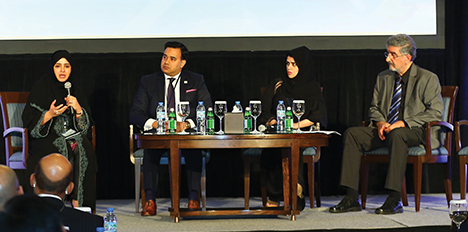
Roxy Binno, Expert of Planning & Urban Design – Planning Research Section, at Dubai Municipality, gave a presentation on Dubai Municipality’s USD 9.5 billion Desert Rose Smart Sustainable City project. He revealed that the city is expected to house 160,000 inhabitants and will cover 4,000 hectares of land. In order to achieve larger renewable coverage, the application of District Cooling system for the city centre and the neighbourhoods was needed, he said. The total electricity demand for cooling may be reduced by 50% by using District Cooling instead of VRF equipment for neighbourhoods, he explained, which he said, would not go down well with the VRF manufacturers present in the audience.
A timely panel debate comprising Al Shimmari, Binno, Nawal Al Hanaei, Director of Engineering & Land Department & Head of Building Section at Fujairah Municipality, and Nesar Reza Khan, Head – Sales & Investments at GGICO Properties, focused on whether affordable housing projects for the GCC region’s citizens represent a strong lifeline to sustain the VRF momentum. In this context, Al Shimmari said: “Affordability is not the right word when we are talking about housing in Dubai. Housing is about being sustainable. This is one of the things we are targeting.”
When it came to VRFs, Khan said, “There is definitely a lot of room for growth for VRFs. VRF has been traditionally known for horizontal developments. In terms of investments it’s definitely very cost effective.” He then asked, “But is it a matter of educating all the stakeholders in the industry?” His unequivocal answer was, “Definitely.”
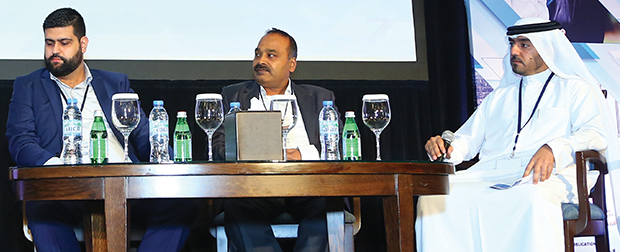
The panel discussion on retrofitting and VRFs looked at market opportunities retrofit programmes offered vis-a-vis the VRF industry. What emerged were ways that manufacturers can showcase the advantages of using VRF systems, including the relative simplicity of the wiring work and – given the fact that the number of outdoor units in a typical project are reduced by a third – the speedy execution of a retrofit activity. Al Shimmari; Majd Fayyad, Technical Officer at Emirates Green Building Council and Jayachandran S, Project Manager at Energy Management Services, participated in the discussion. “VRFs are lightweight, modular, they can fit into elevators and they don’t need cranes for installation, which makes them attractive, especially when we are considering retrofitting,” said Fayyad. “This makes them much easier for retrofitting.” Jayachandran agreed, and added that VRF systems were gaining traction.
What followed was the industry leadership address by Tugrul Kumal, Regional Director, B2B Sales & Product Marketing – Air conditioners, at Hisense Middle East, who spoke on whether R-32 could be a successor to R-410A in VRF technology. He highlighted that R-32 has a significant cost advantage compared to R-410A; however, safety was still an issue, he warned.
Dharmesh Sawant, Senior Manager HVAC Engineering at 1 Team LG Electronics Gulf (Middle East & Africa), in his technical presentation, drew attention to the feasibility of VRF systems in low- and-high-rise buildings, while Hans Reinders, CEO, Oxycom, took the audience through the subject – Future Technology Trends in Energy Efficient Cooling and Ventilation. Reinders said: “Air conditioning and ventilation with much less energy and cost, and hardly any CO2 emissions, is possible. Technological innovation is the way forward to reach sustainability goals.”
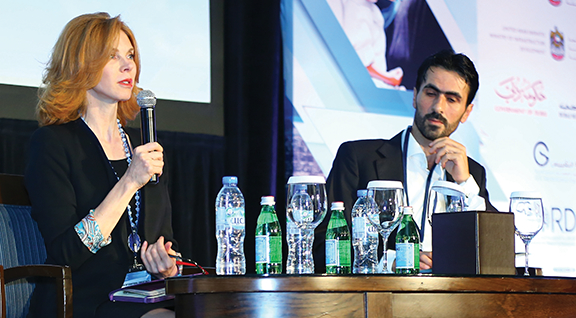
Net-zero-energy revolution was the focus of the next panel discussion, with Imad Shabita, MEP Division Director at Diamond Developers, and Holley Chant, Executive Director, Corporate Sustainability at KEO, International Consultants participating.
Chant’s contention was that there was a need to agree on the definition of zero energy, because there weren’t specific KPIs, as in LEED, GSAS or Estidama, yet. “There are four different ways you can define zero energy,” she pointed out. “It is actually much simpler than that. It’s how much you use and how much you offset.”
[div class=”text-box text-box-left” style=”background-color: #66a3ff; color: #FFFFFF; “]
A special address by Tarek M Al-Sitt, Standards Researcher, GSO, dwelt on Gulf technical regulations for VRF – current status and future plans. On VRF regulations, he said that a draft was submitted by Saudi Standards, Metrology and Quality Organization (SASO) for high-capacity air conditioners, the scope of which specifies the Minimum Energy Performance Standard (MEPS) and testing requirements for large capacity air conditioners. “There is a draft regulation under process in Saudi Arabia,” Al-Sitt said. He invited all VRF manufacturers to participate in the process of compiling it. “You can participate in the Technical Committee meeting and have direct involvement in the draft standard’s development,” he said. “You will get early access to project drafts. Your participation is welcome in early development of every standard.”
[end-div]
Day 1 ended with a panel discussion on VRFs from the developers’ perspective – their experiences with and expectations from the systems. The participants were Nesar Reza Khan, Head – Sales & Investments at GGICO Properties, Fawaz Al Taher, Senior MEP Engineer at Diamond Developers; Emad Mukhalalaty, Managing Director of Altaaqa Alternative Solutions (Zahid Group) and Sathisha Shetty, Project Engineer – MEP, Engineering & Project, Management Department, at Emirates National Oil Company Limited (ENOC). Mukhalalaty, expressing his view point, said: “The decision for going for VRFs or any system is the initial capital investment and the lifecycle cost. The lifecycle cost will prove in time. That is the key element.” Shetty, on the other hand, believed that it was the total cost of ownership. “It is adding the ecological economics and the social cost,” he said.
Day 2 began with a panel discussion comprising consultants and the contractor fraternity in the GCC region. The moderator for the second day was Hassan Younes, Technical Director & Partner at Griffin Consultants, who also participated in the discussion as a consultant. The other participants were Nabil Shafa Amry, Manager MEP at LACASA Architects & Engineering Consultants; Scott Coombes, Director of AESG; Sagar Kulkarni, Managing Director at Consistent Consultants and Khaled Sakka, Mechanical Engineer at Jeet Building Contracting.
Occupants of a building with VRF systems cannot enjoy their full benefits if the building has a poor maintenance structure, said Younes. Amry, on his part, believed that maintenance of VRF systems should be carried out only by trained people. “It is a normal system, but its controls and protocol are different, and so people must be trained,” he said. “If any building has good FM, it is good marketing for the building. So that’s why training of technicians is very important.” He reiterated that it was important for the FM structure to have a good team trained for VRF systems. “FM teams should be certified by manufacturers of VRF systems, who are authorised to give after-sales service,” was his contention.
VRFs can fit into elevators and don’t need cranes for installation, which makes them attractive, especially when we are considering retrofitting
In Coombes’ opinion, FM was a crucial function in a building, because in Dubai, for instance, systems are overdesigned to capacity, and are, therefore, poorly run, in terms of efficiency. He elaborated that systems are overdesigned to cope with that one day in summer when the temperature is 50 degrees C, and with full occupancy. So they can cool but are not efficient, was the point he drove home.
Fady Nassar, Director of Unitary Business, S.K.M Air Conditioning, in his technical presentation spoke of the challenges of VRF system in commercial buildings. Two salient points he made were: VRFs can adapt to meet various applications in buildings and power consumption can be reduced by 30%.
JM Bhambure, Executive Vice President of Blue Star Limited (India), in his presentation gave insights into aligning VRFs to smart cities, building Internet of Things (BIoT) and broad e-initiatives sweeping through the region.
The conference concluded with closed-door sessions held between government bodies and VRF manufacturers. Al-Sitt met with VRF manufacturers to provide details on regulation, and on how manufacturers could get early access to the document. On similar lines, the main objective of Dr Elsarrag’s meeting with manufacturers was to explore avenues for mutual technological cooperation and engagement.
What pervaded through the 4th Annual Middle East Variable Refrigerant Flow Conference was a conducive environment for healthy discussion, during which, participants got an opportunity to exchange ideas, insights and perspectives about various key issues concerning the VRF industry, with many points to ponder and actions to be executed emerging.
(The writer is the Features Writer of Climate Control Middle East.)
Copyright © 2006-2025 - CPI Industry. All rights reserved.